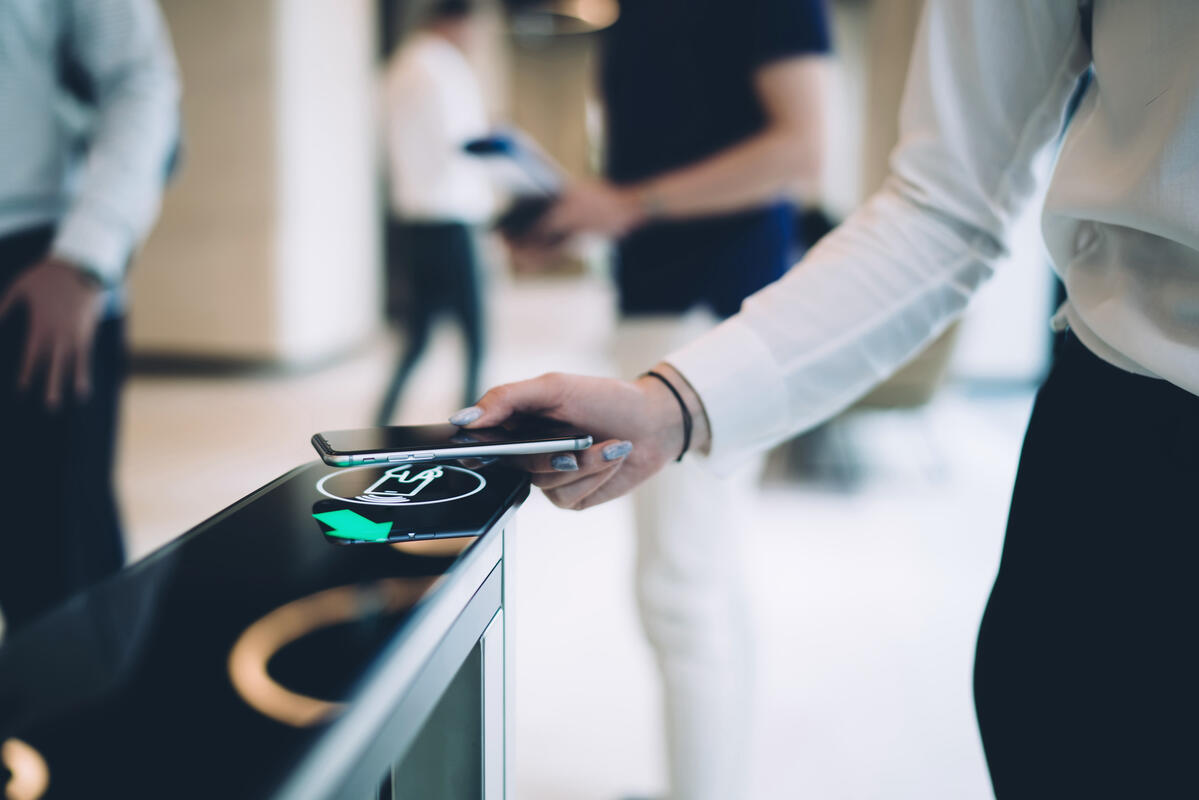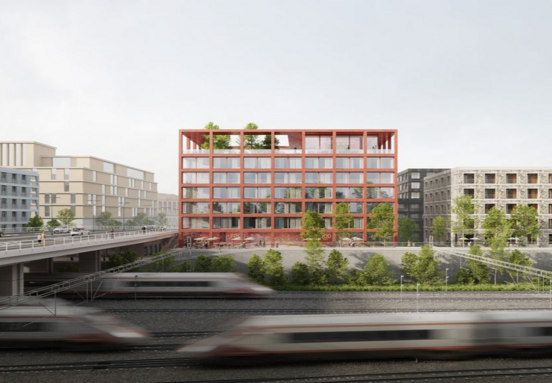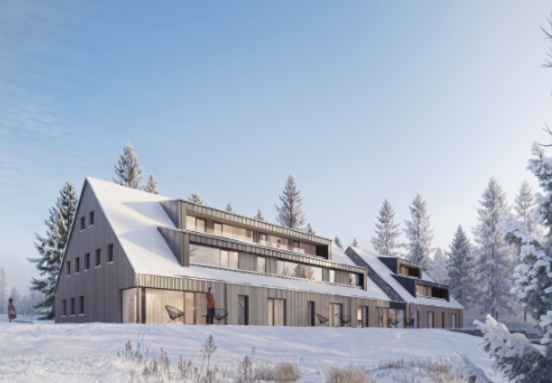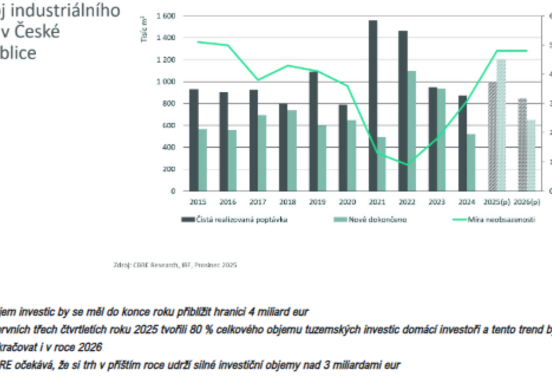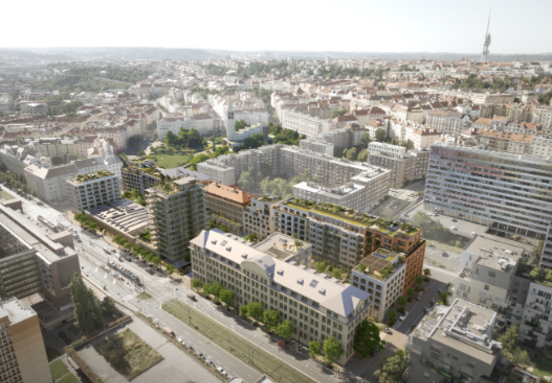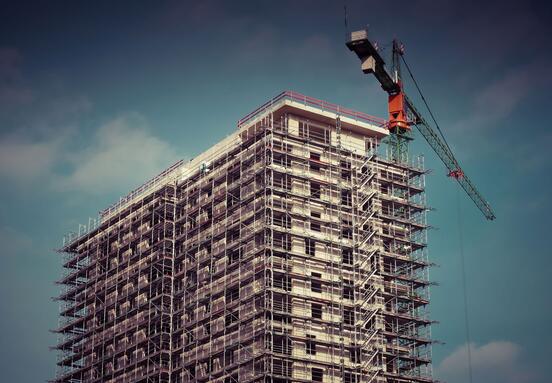"A working day in a smart office building could be described as follows. If you are traveling by car, the barrier will open according to your number plate. If you are going to work by bike, you know in advance that there is a free space in the bike rack. You can unlock the building's door with a mobile phone via an NFC reader or with a personal card. The turnstile in the entrance lobby reads which floor you are from and the control module shows you which elevator to take. He will then take you directly to the floor where your company is located," describes Jan Tvrdek, Senior Project Manager of the Project Management & Building Consultancy department at CBRE, and continues: "Your offices are already ventilated, you have an ideal temperature there. The air was changed overnight, without unnecessary waste of energy. A pleasant climate will be inside for the rest of the day: whether the sun is shining on the building or not, whether it's getting warmer or cooler outside, your office is full of people or you're alone in it. The same applies to lighting. Its intensity will change over time and depending on the type of room so that the best possible conditions for work and rest are maintained. Towards the end of working hours, all these technologies are gradually dimmed to further save energy during the night as well.”
This is an ideal scenario, which is gradually gaining ground in the world. But what is the reality in the country? A recent CBRE analysis focusing on the Prague office market1 shows that there is still a lot of room for the development and introduction of new technologies. Only 25% of office buildings currently use new technologies for monitoring or controlling HVAC systems, have an integrated BMS system or cooling beams or similar technologies for controlling temperature, humidity and indoor air cleanliness. 15% of buildings have modern elevators with smart technologies, and 10% offer their tenants a mobile application, where they can find additional services and information about what is happening in the building and their surroundings. The analysis further reveals that only 3% of buildings use smart technologies for building access.
What should a smart office building include?
Technologies in administrative buildings can basically be divided into technologies for building operation and technologies for users and their comfort. However, this division does not have a fixed boundary and complements each other. Specifically, these are security systems, i.e. solutions used for access to the building (e.g. turnstiles, cards/chips, parking barriers), building security (alarm, camera system) and rapid response in the event of a fire or other threat (electronic fire alarm and evacuation radio). This also includes a data system (i.e. connection to the Internet via cables or via Wi-Fi) and a central system for measuring and regulating heating, cooling, ventilation and lighting. It is this that helps not only to co-create a pleasant working environment, but also significantly saves operating costs. Technologies that primarily increase user comfort include, for example, e-reception and various seat reservation systems. Whether in the parking lot, at electric car chargers or directly at the workplace, where meeting rooms can be reserved, etc. In this regard, it is ideal to have a mobile application directly for the tenants of a specific building, in which they have a complete overview of additional services, from the reservation system to office management to after the canteen menu.
"The ideal state is when all systems communicate with each other and positively influence each other. Unfortunately, no technology manufacturer produces everything comprehensively, so the individual systems must be interconnected - this is called system integration. Setting up the correct functioning of the building is very demanding and it is a lot of work. But the achieved results are definitely worth it," comments Jan Tvrdek.
What you should know and what you should ask
The mentioned central system for measurement and regulation in practice means that you can see into every room in the building from one place (usually from the control room, but in today's era of almost unlimited internet it can be from practically anywhere on the planet) and influence the temperature and lighting intensity in it and a whole host of other parameters. In this way, it is possible to control the entire building very efficiently and remotely. "In order to save energy, modern buildings are set to the optimal time range, which may not suit everyone. If your office has special operational requirements, such as non-stop work, or if you just go to work very early or leave late in the evening, agree with the building manager how to set your time schedule accordingly," explains Simona Šedivá, Senior Project Manager of the Project Management & Building Consultancy department at CBRE.
At the same time, the smarter the building, the higher the investment in technology, which, although not visible at first glance, brings the greatest benefits. "For their proper functioning, it is necessary to have enough sensors in the premises - be it temperature, light, humidity or carbon dioxide. We definitely do not recommend reducing these numbers, as this could mean that, for example, the remote presence sensor does not detect you and turns off the lights, or the temperature sensor in the open position allows the cooling to run, even if it is already cold in the office. Savings can be sought through the appropriate choice of zones, elements of technology and other details," says Simona Šedivá.
Office buildings in the near future
Modern office buildings reflect current trends and societal changes that carry the spirit of sustainability and the physical and psychological comfort of employees. They too gradually develop and become more and more perfect. Some technologies can be partially observed already in the present, but mostly they are only preset programs. In the near future, smart buildings will be able to control all technologies "by themselves", i.e. they will learn according to the behavior of their users, the surrounding weather and other data that they collect through sensors of all kinds - for example, about the occupancy of different places at different times, the use of social facilities, etc. And they will constantly optimize their operation in order to save as much energy as possible. The buildings of the future will also bring even greater comfort to their users. "Imagine that you come to work in a car that you leave at the entrance and that, after communicating with the building, parks itself in the right place. The elevator will pull itself up to the station and take you straight to your office without pressing any buttons. You won't have to turn the light on or off anywhere, because it will always be lit as needed. Smart navigation in the building directs your announced visitor straight to you, and your mobile just beeps that it is already outside the door," describes Jan Tvrdek and concludes: "Such a solution, of course, also has its pitfalls. It will be necessary to have hundreds of kilometers of cables and thousands of sensors in the building. Someone will have to put such a system into operation and, above all, maintain it in perfect condition, as well as protect it against misuse of user data. However, smart offices clearly represent the direction in which we are developing and are therefore a matter of our near future.”
